Presented on: Hahnemann Day, organized by Organon Homoeopathic Medical Association, Pakistan.
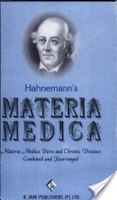 Every one of us who has studied Hahnemann’s work is well aware of the fact that before the great master there was no principle and logical method of ascertaining the effect of medicinal substances and applying them to the sick. Drugs were used on the basis of quite poor and partial knowledge derived from empiricism, doctrine of signatures, toxicology, chemistry or experiments on animals etc. Consequently the medical profession was not certain of effects of medicines and helpless in providing any relief to suffering humanity. According to Hahnemann, the medical profession was doing more harm than benefit. He says in the preface to the Organon (Organon of Medicine, P.17):
Every one of us who has studied Hahnemann’s work is well aware of the fact that before the great master there was no principle and logical method of ascertaining the effect of medicinal substances and applying them to the sick. Drugs were used on the basis of quite poor and partial knowledge derived from empiricism, doctrine of signatures, toxicology, chemistry or experiments on animals etc. Consequently the medical profession was not certain of effects of medicines and helpless in providing any relief to suffering humanity. According to Hahnemann, the medical profession was doing more harm than benefit. He says in the preface to the Organon (Organon of Medicine, P.17):
“This non-healing art, which for many centuries has been firmly established in full possession of the power to dispose of the life and death of patients according to its own good will and pleasure, and in that period has shortened the lives of ten times as many human beings as the most destructive wars, and rendered many millions of patients more diseased and wretched than they were originally.”
In that desperate situation the Creator of medicines opened a door of hope and certainty to our master, that pure effects of medicines should be brought out and known by proving them on healthy humans. That happened to be marvelous. He started doing provings of medicinal substances and applying them to the sick on the basis of the knowledge of their pure, certain and undoubted effects. Thus the era of logical application of medicines began. He says,
§ 106
The whole pathogenetic effect of the several medicines must be known; that is to say, all the morbid symptoms and alterations in the health that each of them is specially capable of developing in the healthy individual must first have been observed as far as possible, before we can hope to be able to find among them, and to select, suitable homœopathic remedies for most of the natural disease.
(Hahnemann, Organon of Medicine, P.188)
§ 110
……….the only possible way to ascertain their medicinal powers is to observe those changes of health medicines are capable of producing in the healthy organism; for the pure, peculiar powers of medicines available for the cure of disease are to be learned neither by any ingenious a priori speculations, nor by the smell, taste or appearance of the drugs, nor by their chemical analysis, nor yet by the employment of several of them at one time in a mixture (prescription) in diseases;
(Hahnemann, Organon of Medicine, P.191)
That was a revolutionary change in the history of medicine. Medicines proved according to Hahnemann’s proposed method became historically beneficial and valuable to the human race. Being followers of our great master we are greatly lucky. We have a sound basis to prescribe on. Our materia medica is not inconsistent as that of other systems of medicine are. What were the effects of Belladonna or Pulsatilla 200 yrs ago; they are the same till the moment. Symptoms and effects of our medicines do not vary by proving them again and again. I believe our materia medica is more concrete and rich in knowledge of medicines than any other system. I have some Hakeem friends and I proudly tell them to ask me about the effect of their medicines. I say, “Should I tell you the effects of Gandhak (Sulphur), Mercury, Suranjan (Cholchicum) or Musabbar (Aloe)? Ask me what you want to know about Foulad (Ferrum) Chandi (Argentum met) or Sona (Aurum) etc.” They wonder when I tell them I have hundreds of pages on the effects of Gandhak only. I tell them to ask me about the effects of table salt (Natrum mur) on the human organism from hair to toenails and from epidermis to CNS. A salute to Hahnemann for discovering the path of truth in the history of medicine that was never thought before him. He rightly said,
§ 109
I was the first that opened up this path, which I have pursued with a perseverance that could only arise and be kept up by a perfect conviction of the great truth, fraught with such blessings to humanity, that it is only by the homoeopathic employment of medicines that the certain cure of human maladies is possible. (Organon of Medicine, PP.189-9)
Note No. 91
Not one single physician, as far as I know, during the previous two thousand five hundred years, thought of this so natural, so absolutely necessary and only genuine mode of testing medicines for their pure and peculiar effects in deranging the health of man, in order to learn what morbid state each medicine is capable of curing, except the great and immortal Albrecht von Haller. (Hahnemann, Organon of Medicine, P.189)
A huge and laborious work of proving medicines and collecting their symptoms started. Many of Hahnemann’s pupils and friends helped him and thus we have various editions of his “Materia Medica Pura” published in his lifetime. When a good number of medicines had been proved and a huge bulk of their symptoms had been noted in the form of Homoeopathic Materia Medica, there arose a new problem as how to bring this vast data into practice; how to look for the symptoms of patient in the materia medica? On one hand there was great necessity of proving more and more medicines to cope with the vast variety of diseases of the human race, while on the other hand, materia medica was becoming so large, that is was impossible to retain in the mind and bring it into practice. E.A. Farrington says:
“The ten volumes of the Encyclopaedia of Materia Medica, issued by Dr. Allen of New York, contain over nine thousand pages. These do not include clinical symptoms,which would make several thousand more. Then recollect, each physician discovers something new each year, and so a great mass of knowledge is accumulated by a sort of compound multiplication. You can, therefore, well understand why the student might be startled at the idea of attempting to master such a conglomeration. Nor could he master it, were he to attempt to do so by memory alone.” (Farrington, Clinical Materia Medica in Family Order, P.1)
Not having or knowing the effects of medicines was not the problem, but how to use that knowledge, how to manage that vast unconnected data, how to bring it into practice? Some pioneers (Boenninghausen, Boger, Kent etc.) developed repertory systems. Others (Lippe, Allen, Boger etc.) made brilliant cures and served suffering humanity through the keynote system. Hundreds of books came out; thousands of practitioners studied and practiced homoeopathy in the past two centuries. But still there was the problem of how to systematize the materia medica, to bring it into a form and frame in order to manage it, retain it and make it practicable.
Farrington felt the need of arranging and understanding the materia medica through some system. He says,
“So you study the Materia Medica, analyzing one drug after the other until you have analyzed all. Then you must arrange your remedies according to some system in your mind, and so be enabled to recall facts as you need them. If you study only one remedy, every case you see fits that remedy. If you have studied Aconite, every case will suggest Aconite. Thus you must have Aconite and its confreres side by side in your mind, before you can use them successfully in the sick room. This is done by systematizing your study”. (Farrington, Clinical Materia Medica in Family Order, P.8)
First, materia medica in our literature was divided into kingdoms and arranged in family order in Farrington’s “Lectures on Clinical Materia Medica in Family Order”. He describes the arrangement of his materia medica as follows, “We are now ready to begin our study of the various drugs composing the Homoeopathic Materia Medica. For this purpose I have arranged the remedies in three grand divisions, according to the kingdom of nature from which they are derived, viz.:
1. Remedies derived from the animal kingdom.
2. Remedies derived from the vegetable kingdom.
3. Remedies derived from the mineral kingdom.”
(Farrington, Clinical Materia Medica in Family Order, P.9)
Farrington made a remarkable contribution in this area and furnished available material of that time in a very beautiful manner. Following are examples of his descriptions of some families/groups of medicines:
“Today we begin our study of the medicines obtained from the animal kingdom. I desire to preface my lecture on these remedies with a few remarks relating to their properties in general. Many of the animal poisons are distinguished by the violence and intensity of their action, and by the decided alterations which they produce in both structure and function. The blood is often changed in its composition and quality. The nervous system suffers and even the lower tissues are affected. The whole tendency of these remedies is to produce diseases, which are never of asthenic character and always of a destructive form, tending thus to local as well as to general death of the body. (Farrington, Clinical Materia Medica in Family Order, P.11)
Anacardiaceae:
All the plants of this order are poisonous; they affect the blood, and develop an eruption on the skin which is, at first, vesicular and finally pustular and eczematous. They may also produce an erythema ending in erysipelas. Despite the similarities thus far mentioned, there are great differences in their physiological action; in fact, these differences may be so great that, in some points, they may bring some of the members of the group into an opposite relation to each other.
(Farrington, Clinical Materia Medica in Family Order, P.246)
The carbon group:
Now, all of the carbonaceous substances have some properties in common. For instance, they all have a tendency to relieve putrescence or putrid discharges or putrid exhalations from the body and offensive sores.
(Farrington, Clinical Materia Medica in Family Order, P.570)
In this way Farrington systemized the materia medica. Those who have keenly studied his “Clinical Materia Medica in Family Order” have a deeper understanding of the subject. He very beautifully described many common features of kingdoms and families that help us in understanding the materia medica. However, the basic nature or qualification of each kingdom, that differentiates it from other kingdoms, was not explored and defined till that time. Farrington says:
“A study of the vegetable kingdom involves to some extent a study of the mineral kingdom, because many of the medicinal properties of vegetable remedies owe their existence to substances derived from the minerals in the soil in which they grow.” (Farrington, Clinical Materia Medica in Family Order, P.177)
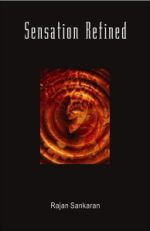 Dr. Rajan Sankaran, a genius mind, son of a brilliant Indian homoeopath Dr. P. Sankaran, stepped ahead and brought a revolution in concepts of the homoeopathic materia medica. He found that in medicines there is something deeper than symptoms. With the help of his deep understanding of the materia medica and vast knowledge of repertories he was able to see glimpses of such qualities/qualifications in medicines which they posses on the basis of the source/origin they come from. He noted that every medicine has a basic quality derived from its basic natural source. That is, the basic nature or qualification of medicines of different origin is also different. A medicine made of plant, mineral or animal kingdom possesses such qualities as specifically belong to its origin/kingdom and not found in other kingdoms. Medicines naturally possess some qualities that directly connect and relate to their source and origin. He clearly defined that there is a basic feature of each kingdom that differentiates it from other kingdoms. On further exploring the idea he came to know that medicines that belong to a sub-kingdom or a family also share some qualities with each other which are not in the nature of other sub-kingdoms or families. Thus scientific classification of medicinal substances was clearly reflecting in medicines and correlating to the field of therapeutics. This idea systemized the whole materia medica. We can say that Sankaran almost completed the work where it was left by Farrington. Sankaran says:
Dr. Rajan Sankaran, a genius mind, son of a brilliant Indian homoeopath Dr. P. Sankaran, stepped ahead and brought a revolution in concepts of the homoeopathic materia medica. He found that in medicines there is something deeper than symptoms. With the help of his deep understanding of the materia medica and vast knowledge of repertories he was able to see glimpses of such qualities/qualifications in medicines which they posses on the basis of the source/origin they come from. He noted that every medicine has a basic quality derived from its basic natural source. That is, the basic nature or qualification of medicines of different origin is also different. A medicine made of plant, mineral or animal kingdom possesses such qualities as specifically belong to its origin/kingdom and not found in other kingdoms. Medicines naturally possess some qualities that directly connect and relate to their source and origin. He clearly defined that there is a basic feature of each kingdom that differentiates it from other kingdoms. On further exploring the idea he came to know that medicines that belong to a sub-kingdom or a family also share some qualities with each other which are not in the nature of other sub-kingdoms or families. Thus scientific classification of medicinal substances was clearly reflecting in medicines and correlating to the field of therapeutics. This idea systemized the whole materia medica. We can say that Sankaran almost completed the work where it was left by Farrington. Sankaran says:
It is, however, becoming very clear to me (and to others) that the symptomatology of any drug is intimately related to the source it is drawn from, and that each drug has in it the essence of its source.
Plant kingdom
The basic quality of a plant is sensitivity.
Animal kingdom
Competition is the rule in the animal kingdom. The theme of survival of the fittest holds true for all living creatures including algae, fungi, plants, etc., but is most evident in the animal world.
Mineral kingdom
The central features of the mineral kingdom are structure and organisation.
(Rajan Sankaran, The Substance of Homoeopathy, PP.256-59)
When we see Sankaran’s work in detail, every sub-kingdom, family and group of medicines has been clearly defined and explained on the basis of their scientific classification. The nature of mineral remedies has been explained according to their natural occurrence in the periodic table. Similarly, animal and plant families have been explained connecting their scientific classification to their therapeutic application. Roger Morison MD says in the foreword to Sankaran’s book “Structure”:
Those of us, who have seriously and unprejudicedly followed the work of Rajan Sankaran over many years, have witnessed a flowering of insight and precision in theory, in casetaking and in prescribing. In recent years, Dr. Rajan Sankaran’s methodology and conceptual framework has matured into a coherent system (see his books, “Sensation in Homoeopathy and Sensation Refined”) that examines homoeopathic remedies from a systems approach rather than a mere collection of data. Through observation into the underlying unity of remedies in various families of plants, animals and minerals, Dr. Sankaran found the keys to a more sophisticated and reliable method of finding the Similimum.
(Rajan Sankaran, The Structure, P.13)
I am lucky for having opportunity to study Sankaran, along with my brilliant colleagues Dr. Nazia Hassan, Dr, Ikhlaq Rahim, Dr. Kulsoom Hassan and Dr. Riffat Nawab Musab (I being the laziest of all), under the supervision of my great guru Dr. Choudhery Ahmad Hassan. We are witnessing marvelous results. Many of our cases that were not being cured by our previous knowledge are yielding to this approach. This is an additional tool for classifying, individualizing and differentiating the patients. When we have two, three, or four remedies apparently equally similar to the patient, we can easily arrive at the required one if we are able to distinguish his/her kingdom. What is the patient’s behavior? Is he like a plant, an animal or mineral? Medicines selected through this approach are working very deeply and many of our cases seemingly incurable are being cured now. Dr. Nazia Hassan and Dr. Ikhlaq Rahim will share with you some cases. I also present a case that was not being improved with all my efforts and was cured by applying Sankaran’s concept of kingdom.
Male patient of 25 yrs
C/C: Renal concretions. Pain, kidney region, left side.
H/O Renal calculi of 45mm size, removed by laser 4 yrs ago.
Symptoms:
Headache, occasional, no clear modality. Weariness, indisposition to work, heaviness of kidney regions.
HOT patient, thirst normal, appetite diminished, perspiration profuse, desire cold drinks, anger temporary with consolation amelioration.
Prescription:
Date 28-06-11: Puls 6, water doses, one spoonful morning and evening.
Follow ups:
05-07-11: No marked change, Puls 6, 2nd dilution.
12-07-11: No marked change, H/O right sided hernia operated, renal calculi started 6 months after the operation. Lyco 6, water doses morning and evening.
21-07-11: 2 stones passed, pain better, no more change, Lyco 6 , 2nd dilution.
27-07-11: kidney pain better, no other change. Lyco 6, 3rd dilution.
04-08-11: Kidney pain relapsed after having a fast. Lyco 12, water doses morning and evening.
16-08-11: Left kidney stone again enlarged to 23 mm. Thuja 1M followed by Puls 6, four times daily.
24-08-11: No significant change. Puls LM1 morning and evening.
07-09-11: No improvement. Puls LM1 2nd dilution, morning and evening.
Patient left treatment and came back to restart.
01-03-12 : Sars 6 four times daily.
15-03-12: Small pieces of stone passed, no more change. Sars 6 continued.
24-0-4-12: Sediments less than before, stone size not decreasing. Sars 12 four times a day.
01-05-12: Sediments passing in urine but stone size increased from 26mm to 32 mm. Thuja 6 four times a day.
22-05-12: No significant change. Thuja 50M. single dose.
Again left treatment and came back to restart.
12-09-13: Pain agg. motion, amel. lying down. Bry 6 four times a day.
18-09-13: Pain somewhat better, symptoms not taken before: sexual desire increased, patient is a hunter. On the basis of increased sexual desire and his hobby (Hunting) I considered him of animal kingdom.
Repertorization: (1) Kidney stone remedies (2) animal kingdom: Cal-c, Sep, Coccus c.. I wondered when I read the section of urinary symptoms of Coccus cacti in Vermeulen’s Concordant Materia Medica, what a strong action Coccus had on kidneys and kidney stones!
 Urinary symptoms of Coccus cacti in Vermeulen’s Concordant Materia Medica
Urinary symptoms of Coccus cacti in Vermeulen’s Concordant Materia Medica
Renal colic; 11 & very copious urine and dull pain in urethra. Sticking, along ureters. 7 Dull, pressive, and soreness in region of kidneys; 11 agg. pressure or motion. Pressure in bladder. Burning, in urethra while urinating; 11 and continuing after. Stitches and itching in urethra. 11 In kidneys, & spasmodic difficulties of chest. Spasmodic, in kidneys, & vesical tenesmus and frequent emissions of deep-coloured urine. Cutting, in region of bladder. Sudden, acute, prolonged lancinations, from l. renal region along ureter extending to bladder. Very violent lancinating thrusts in anterior portion of urethra and glans, a long time after having urinated when in bed at night; they force him to groan and cry out, and last a minute and a half. OB Urging to urinate; brick-dust sediment. Urinary calculi, haematuria, urates and uric acid; lancinating pains from kidney extending to bladder; 2 & dysuria. Deep-coloured, thick urine. 2 Constant urging to urinate, agg. after passing blood clots from va-gina in female; 11 but can pass no urine until an enormous clot of black blood has passed; in menorrhagia. Urine; scanty, thick [11 like oil], heavy, sour; sediment sandy, dark red, brown or white; bloody mucus. 7 Frequent and copious urination, urine clear as water; soon becomes turbid and cloudy. 11 Nephritis & pericarditis. Frequent scanty discharge of urine, difficult and slow in coming, & straining and vesical tenesmus. Urine excoriates; falls over vulva drop by drop. Odour of urine sometimes alkaline, often ammoniacal; also cadaverous when it is dark-coloured and cloudy. Acute renal dropsy. Urine contains mucus in the form of filaments, clouds, and flocks, and the sediment is entangled with much mucus. Violent pruritus and itching at orifice of urethra. (Frans Vermeulen, Concordant Materia Medica, P.341)
Prescription:
Coccus Cacti 30 one dose daily for 7 days.
01-12-13: Patient did not come on the mentioned date, so I went to his shop to by some food and asked how he was? He informed me that a lot of concretions passed after taking the last medicine and since then he was quite OK. He had no pain, no complaints, though he didn’t get ultrasound report. Had I not known Sankaran’s concept of kingdom, I might never have thought of prescribing Coccuc cacti in a case of renal calculi.
Picture of stones passed with Coccus Cacti
I would like to end my remarks by highlighting an important point regarding Sankaran’s concept of kingdom. Though these new concepts are helping us a lot, yet they are not a substitute for fundamental knowledge of homoeopathic philosophy, materia medica and repertory. It is my personal observation that without that basic knowledge, Sankaran’s method lead to failures. Only those homoeopaths are getting best results from Sankaran’s method who have a sound basic knowledge, who understand the Organon well, who have a good knowledge of materia medica and are well familiar with the repertory. Further, all cases do not need such methods. Some very easily yield to the conventional methods. If we are not well acquainted with the basic methods, we cannot gain benefits from the new one.They are additional tools, not substitute for fundamental principles. Sankaran himself says:
I must warn that such differentiation is neither final nor full-proof, and is not always clear. Let it be considered another point of view, so that we may be able to look at a case from several view points, and not only one. (Rajan Sankaran, The Substance of Homoeopathy, PP.256)
References:
- Farrington, E. A. 2002, Lectures on Clinical Materia Medica in Family Order, B. Jain Publishers, New Delhi, India.
- Hahnemann, Samuel 1997, Organon of Medicine, B. Jain Publishers, New Delhi, India.
- Sankaran, Rajan 1994, The Substance of Homoeopathy, Homoeopathic Medical Publishes, Bombay, India.
- Sankaran, Rajan 2009, The Structure, Homoeopathic Medical Publishes, Bombay, India.
- Vermeulen, Frans, Concordant Materia Medica, Indian Books and Periodicals Publishers, New Delhi, India.



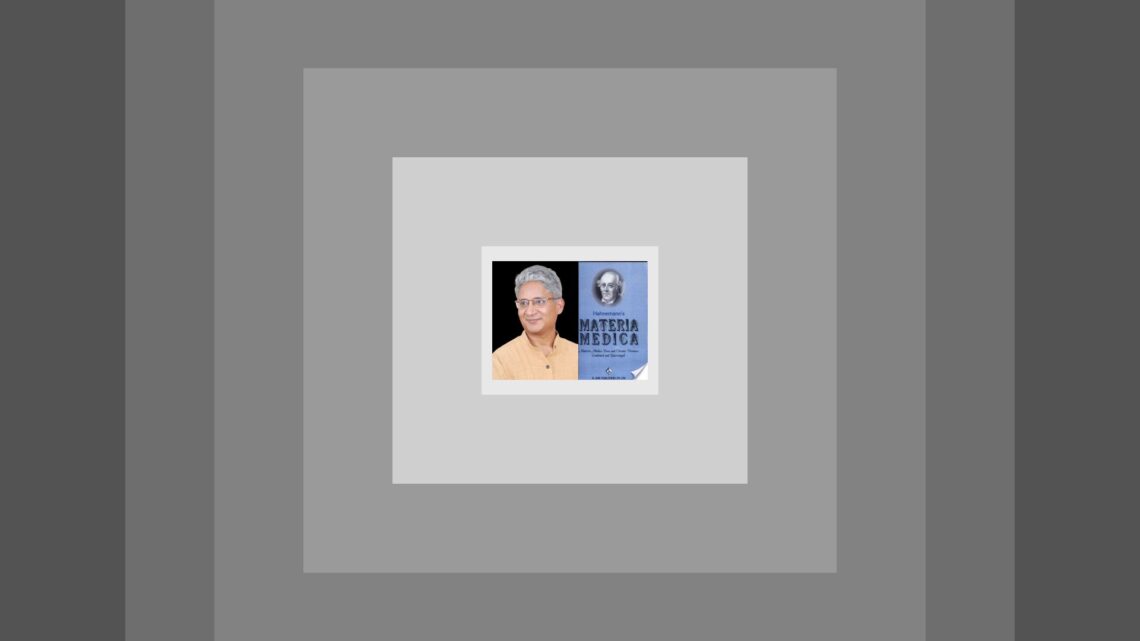
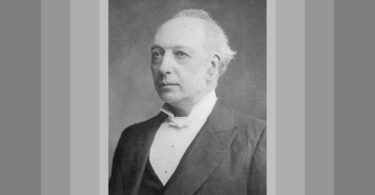

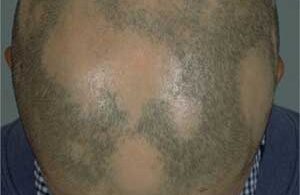
very nice article Sir … !!!!
thanks Junaid
Thank you for writing such a detailed article. I have found a couple versions of the Materia Medica. I use homeopathy for a variety of issues that arise. My favorite is for allergies, no side affects and works in minutes. Learning how to use homeopathy properly was a hit and miss proposition. I have not found instructions anywhere. It was when I purchased a homeopathic pet care book that I found suggestions on how to use the remedies. Since then I have done more research and swear by the remedies.
There is no end to learning. What shall the elder Homoepaths do has a BIG question mark?
Asghar Ali
Very good article, want some more examples of plant and mineral groups.
thanks, for details better to study Rajan Sankaran;s books 1 “The Spirit of Homoeopathy” 2 “The Substance of Homoeopathy” and 3 “The Sensation in Homoeopathy”
Very good article, a guideline to treat the patients suffering from kidney stone. I believe homeopathy can do a miracle if the proper diagnose and medicine selection is made.
thanks
DEAR DR,
CONCLUDING PARA OF THE ARTICLE IS THE GIST OF HOMEOPATHIC SYSTEM AND FUNDAMENTALS. THIS PARA IS GREAT AND MUST BE REMEMBERED ALWAYS BY ALL HOMEOPATHS
THANKS
yes of course, thanks
An excellent gem of knowledge from a well known Homeopath, teacher author and speaker. Dear sir thank you very much to share such precious information with us.
Best Regards
Interesting case. But if I may say, every Homeopath has a slightly different way of looking at a case. The problem in failed cases arises at the case-taking and analysis stage itself. If you had repertorized the case by any conventional method, you would have found Coccus cacti is an important Red-letter drug in Boericke’s repertory. Convoluted thinking complicates cases and the results are not reproducible.